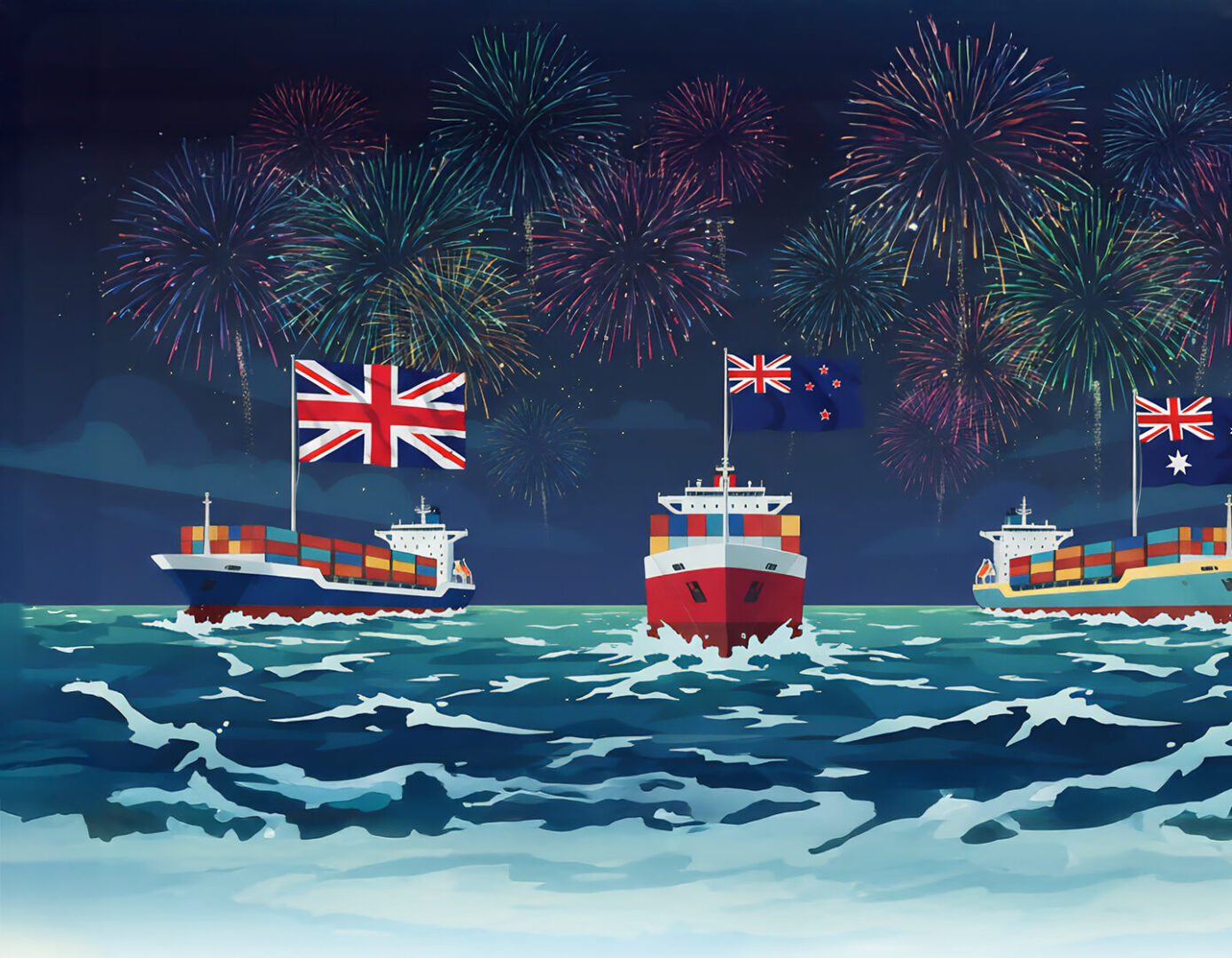The United Kingdom, New Zealand, and Australia have set the global benchmark for sustainable trade as leaders of the 2025 Hinrich-IMD Sustainable Trade Index.
Protectionism has become the name of the game in a new rulebook for global trade, one underpinned by three clear strategic trade-offs, according to the annual ranking.
“Business leaders in today’s fragmented world must prioritize finding a sweet spot between opposing forces: efficiency and strategic autonomy, short-term profitability and long-term social cohesion, and committing to action on climate change and developing national sovereignty,” said Arturo Bris, Director of the IMD World Competitiveness Center (WCC), in reference to the trade-offs.
Produced annually by IMD’s World Competitiveness Center (WCC) and the Hinrich Foundation, the Index ranks 30 global economies on their ability to balance economic openness with social progress and environmental responsibility.
Their strong performance reflects more than just open trade policies; it stems from balanced and resilient models that integrate economic openness with social progress and environmental responsibility.
While all three economies maintain liberal trade regimes – such as the UK’s extensive network of 39 regional trade agreements – their success lies in robust governance mechanisms, world-class education systems, and strong environmental standards. Most of the economies assessed are members or applicants of the Asia-Pacific Economic Cooperation (APEC), the Comprehensive and Progressive Agreement for Trans-Pacific Partnership (CPTPP), or the Regional Comprehensive Economic Partnership (RCEP) – some of the world’s most impactful trade alliances.
“We are seeing a long-term situation of uncertainty take root,” said Christos Cabolis, Chief Economist at the WCC. “The tariff policy of the US (ninth) shifts week to week, while China (16th) is pursuing dual circulation, which involves a reduced emphasis on exports as the primary growth engine. Meanwhile, the EU is combining carbon-border mechanisms with green subsidies, and India (23rd) is seeking selective autonomy.
“These are not policy aberrations awaiting correction. They define the new operating environment, and the question is no longer one of when stability will return but how to build strategies in a context of persistent uncertainty.”
The researchers believe that this is far from a positive trend in today’s world, characterized by global instability and deep domestic distress. A second trend – fewer shared international best practices – exacerbates the situation and indicates that we are retreating from global and open trade.
The Index finds clear differences between the sustainable trade practices of wealthier economies – which have moved away from voluntary commitments towards binding regulations – and emerging and developing economies, which are yet to implement similar frameworks due to limited resources, competing priorities, or weaker institutional capacity. Binding regulations are not interpreted by the authors as climate leadership but as green protectionism.
Noteworthy performances
The United Kingdom (second in 2024) has significantly reduced its reliance on natural resource exports, also lowering its per capita emissions, suggesting steps toward a successful transition to higher-value, less resource-intensive trade profiles for developed economies.
New Zealand (first in 2024) has fully embraced trade as a growth strategy via high liberalization and low tariffs.
Australia (third in 2024) sets the benchmark for human capital, labor standards, and public trust in trade.
Within the top 10, South Korea (fifth), Hong Kong SAR (sixth), and the US (ninth) all advanced, while New Zealand (second), Japan (seventh), and Taiwan (tenth) each fell slightly. Sri Lanka (20th) was found to be the most progressive of all 30 economies – up six places since last year.
How do you measure sustainable trade?
Sustainable trade is the concept of conducting international trade in ways that minimize negative environmental impacts, promote social welfare and labor rights, and support long-term economic resilience.
As such, the Index is structured around three pillars:
- The economic pillar reveals three distinct strategic pathways that reflect different stages of development and the market positioning of various actors. Advanced economies are seen in this year’s Index to be pursuing consolidation strategies, using their existing institutional strengths to weather global uncertainties while maintaining competitive advantages.
- The societal pillar measures how economies navigate selective social upgrading, making targeted improvements in specific areas while managing the social tensions that accompany rapid economic transformation.
- The environmental pillar captures economies at vastly different stages of reconciling trade-driven growth with environmental stewardship.
The IMD World Competitiveness Center (WCC) and the Hinrich Foundation both view trade as a vehicle for reaching shared prosperity. They also believe that international trade is the world’s most powerful engine for economic advancement and overall progress.
The Hinrich Foundation is an Asia-based philanthropic organization dedicated to advancing mutually beneficial and sustainable global trade.
The Index serves as a strategic compass for business leaders, policymakers, and researchers seeking to foster more resilient and more inclusive trading relationships in our rapidly evolving global economy.


